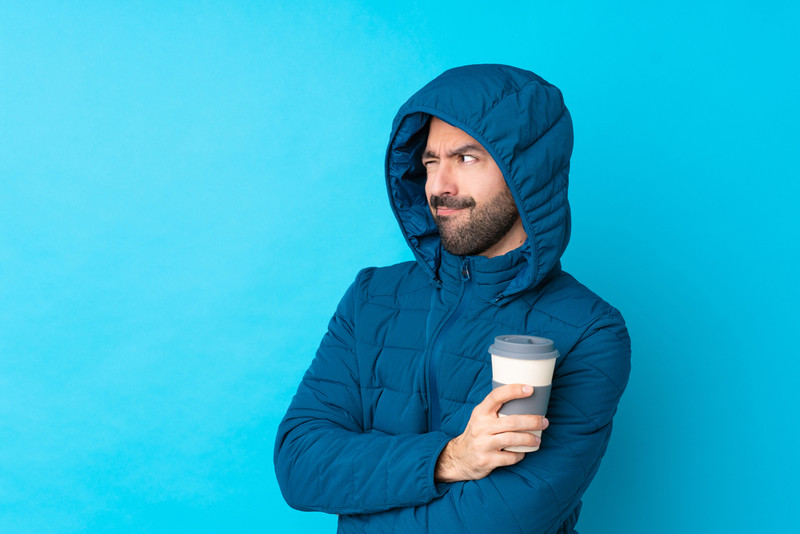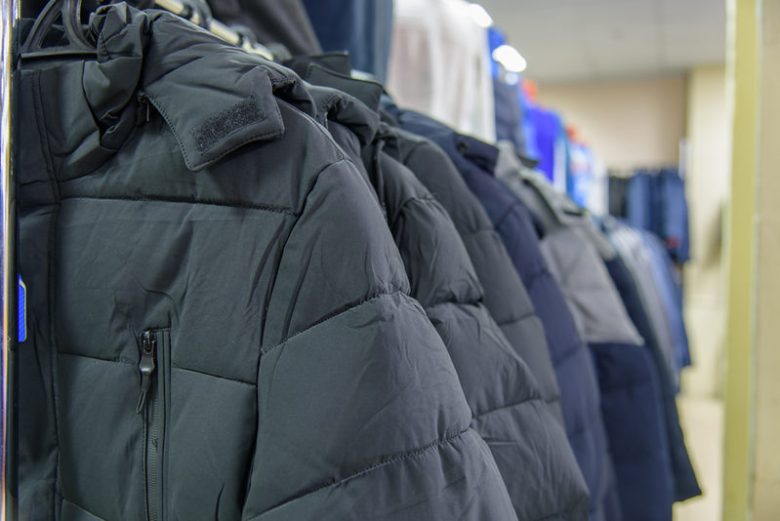I don’t know whether you’ve noticed, but winter coats aren’t exactly cheap these days. In fact, they’re the kind of purchase that makes you double-check your bank balance, wonder whether you could still get away with last year’s threadbare number, and briefly toy with the idea of hibernating until April.
But, like it or not, a decent winter coat is one of those grown-up purchases we can’t avoid. It’s not just about looking presentable at the school gates or avoiding frostbite on the morning commute. It’s an investment – in comfort, health, and in not being the dad who looks like he’s wrapped in an old tea towel when the temperature drops below zero.
The trick, though, is making sure you’re actually paying for quality. Because while some coats cost a small fortune for very good reasons, others are priced like luxury items when they’re essentially made out of plastic. So how do you tell the difference?
Let’s break it down.
The Fit: Don’t Go Full Marshmallow
A quality winter coat should fit properly. Obvious, right? And yet many of us (myself included) have waddled around in coats so big we look like overstuffed pillows. Go too small and you can’t lift your arms above shoulder height. Go too big and you’ll catch every doorframe on your way out.
Here’s the test: when you try on a coat, wear a jumper underneath. You should be able to move freely without feeling like the Michelin Man. The sleeves should cover your wrists, the shoulders should sit where your shoulders actually are, and you should be able to zip or button it without sucking in your stomach until you turn blue.
A good fit isn’t just about vanity – it keeps the warmth in and stops cold air sneaking up your back.
Warmth: Down vs Synthetic
What’s inside a coat matters just as much as what’s outside. You’ll see two main types of insulation: down (feathers, usually from ducks or geese) and synthetic (clever man-made fibres).
- Down is lightweight, super warm, and packs down small. It’s brilliant in very cold, dry weather. The downside (sorry) is that it loses its insulating power when wet, so unless the coat has a good waterproof outer, you risk turning into a cold, soggy mess in a British downpour.
- Synthetic insulation is heavier but keeps its warmth even when damp. It’s also cheaper and more ethical if you’d rather avoid animal products.
In the UK, where sideways rain is as much a part of winter as mince pies, a synthetic-filled coat or a down coat with serious water resistance is usually the smarter choice.
Weight vs Warmth
There’s an odd myth that the heavier a coat is, the warmer it must be. Not true. Some of the best winter coats are surprisingly light because the insulation does the hard work. If a coat feels like it’s dragging you down like a lead apron at the dentist’s, it’s probably just using thick, heavy fabric rather than clever design.
That said, super-light coats can sometimes feel a bit flimsy. The balance to aim for is something that feels robust without making you sweat like you’re doing laps in a sauna.
The Outer Shell: Keeping the Rain Out

The outer material of your coat is your first line of defence against rain, snow, and the kind of wind that makes you question your life choices. Cheap coats often use thin polyester that soaks up water like a sponge. Better-quality coats use technical fabrics with waterproof or water-resistant coatings.
Look out for terms like Gore-Tex, HyVent, or DryVent – these aren’t fancy marketing words, they’re actually tested technologies designed to keep you dry while letting sweat escape (because nobody wants to arrive at work looking like they’ve had a sauna session on the bus).
At the very least, your coat should claim to be water-resistant. Ideally, you want waterproof seams too, because water has a nasty habit of sneaking in where bits of fabric are stitched together.
Zips, Buttons, and Other Sneaky Shortcuts
Here’s where cheaper coats often reveal themselves: the details.
- Zips should feel sturdy and glide smoothly. A flimsy zip is guaranteed to break when you’re already running late.
- Buttons should be securely stitched – no loose threads hanging like they’re about to make a break for it.
- Pockets should be deep enough to actually fit your hands or a smartphone (you’d be amazed how many aren’t).
Quality coats often have storm flaps (fabric covering the zip to stop wind and rain sneaking through), adjustable cuffs, and hoods that don’t flap backwards in a stiff breeze. All small things, but they add up to a coat that actually works in real life.
Style Points (Because Let’s Be Honest)
Practicality is important, but nobody wants to look like they’ve borrowed their dad’s gardening jacket. A quality coat should be something you feel comfortable wearing every day – at the park, the office, or even the pub.
Classic styles like parkas, pea coats, and wool overcoats don’t really go out of fashion. Bright orange ski jackets might. If you’re spending serious money, stick to a style you won’t hate in two years’ time.
And if you want extra dad points: look for coats with lots of pockets. There’s something deeply satisfying about finding a forgotten packet of mints in February that you stashed away at Christmas.
How Much Should You Spend?

This is where it gets tricky. You can pick up a winter coat for £40 on the high street, or you can spend upwards of £400 on a premium brand. The difference usually lies in the materials, the build quality, and whether you’re paying for the label sewn inside.
Here’s a rough guide:
- Budget (under £100): You’ll get something that looks fine and will keep you warmish for a season or two, but don’t expect it to survive many winters (or many rainstorms).
- Mid-range (£100–£250): A sweet spot for most people. You’ll find coats with proper waterproofing, good insulation, and sensible details.
- Premium (£250+): High-quality fabrics, serious attention to detail, and a coat that could last you a decade – provided you don’t leave it on a train.
The key question isn’t just how much you’re spending, but whether the features justify the price tag.
Without turning this into an advert, here are a few names that have options in the price categories above and are worth keeping an eye on if you want coats that are built to last:
- North Face, Patagonia, Rab: Great for technical, weatherproof gear.
- Barbour: Quintessentially British, hard-wearing, and gets better with age (once you’ve accepted the smell of waxed cotton).
- Marks & Spencer: Surprisingly reliable for decent-value winter coats that don’t scream “dad uniform.”
- Uniqlo: Affordable but well-designed, especially their lightweight down coats.
You don’t have to buy from these brands, of course, but they set a standard for what quality looks and feels like.
Think Long-Term
The real test of whether a coat is worth the money isn’t how it feels on day one, but how it holds up three winters later. A quality coat will keep its shape, its warmth, and its zips intact. A poor-quality one will shed buttons, fade, and leave you muttering darkly about false economies while shivering on the touchline at your kid’s football match.
So before you hand over your card, think long-term. If the coat in front of you feels sturdy, warm, and like something you could wear year after year, it’s probably worth the investment.
Buying a winter coat shouldn’t feel like a gamble. Yes, they’re expensive – but if you know what to look for, you can make sure you’re paying for quality rather than just a fancy logo. Check the fit, the insulation, the outer shell, the details, and the long-term durability. If it ticks those boxes, you’ll be glad you spent the money when you’re warm, dry, and smugly watching other Dads get soaked in their leaky, expensive, designer gear.
After all, winter comes around every year. Your coat might as well be up to the job.

